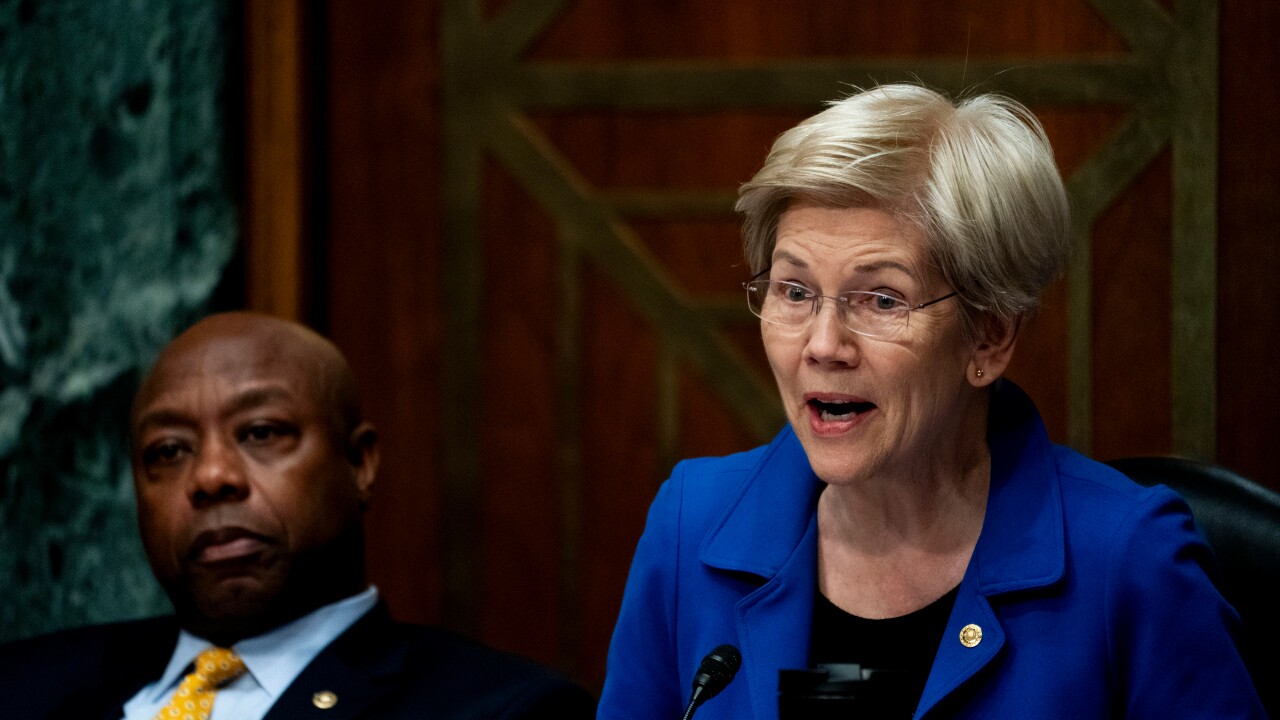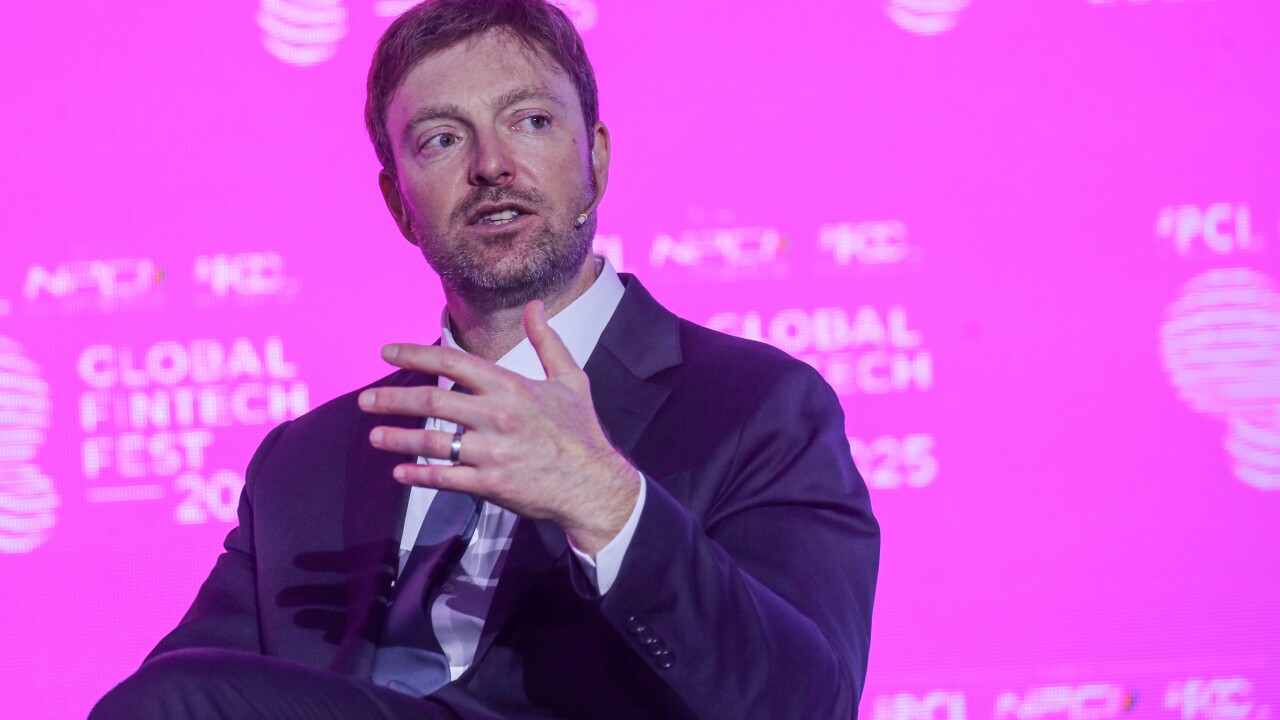Alan Lane had his “aha” moment about digital currencies in 2013, when he bought his first bitcoin through Coinbase.
Once he owned the digital currency, he realized he could move it around instantly.
“I didn’t have to wait for some reconciliation and settlement process to happen behind the scenes," Lane said. "That's the beauty of dollars on a blockchain: They move instantly. It takes out all the friction that exists in the current financial system.”
Today, Lane’s company, Silvergate Bank in La Jolla, California, is a bank partner of Coinbase and of four U.S. dollar-backed stablecoins — Circle, Paxos, Gemini and TrustToken. The Diem Association announced last week Silvergate will be the issuer of Diem, the U.S. digital currency Facebook conceived of in 2019 under the name Libra and is in the process of redesigning; Diem is expected to launch later this year. At the same time, the Diem Association said it's moving its base

Lane is joined by, among others, Stuart A. Levey, a former top financial crime official in the Treasury Department and chief legal officer at HSBC for eight years, and the team at Anchorage, a tech startup that became a trust bank in January. They are morphing the project from an unregulated digital currency that would circumnavigate the banking system to a digital dollar that will meet every banking regulation, and in which traditional banks will be involved.
However, Facebook's original mission of creating a digital dollar that would make payments of all kinds more efficient but would especially help the underbanked, remains intact, leaders of the project say.
Getting from Libra to Diem
The day the Libra project was announced, Lane downloaded the white paper and all the supporting documents, locked himself in his office and read them all.
A month later, when David Marcus, who at the time was head of Calibra and now runs Facebook’s digital wallet Novi, was called to testify in front of Congress about the proposed digital currency, Lane and his family were on vacation. But Lane tuned in.
“I left my family at the beach and went back into the hotel room and watched those hearings,” Lane said.
The hearings didn’t go well. Lawmakers and later officials of several countries
Though the project appeared to be dead after that blacklash, Facebook and a few remaining members of the Libra Association kept working on it, reimagining it in a way regulators could find palatable.
Shortly after the congressional hearings, Libra’s leaders approached Levey about joining the group.
Levey was the first undersecretary for terrorism and financial intelligence within the Treasury Department under Presidents George W. Bush and Barack Obama. His work at that time is portrayed in the book "Treasury’s War," about how the U.S. government used the financial system to fight international terrorism and money laundering. After that he spent eight years as the chief legal officer at HSBC.
Though it’s surprising that someone with such a deep government and legal background would back the free-spirited Libra, Levey says he was taken with the project’s financial inclusion mission.
“The technology that underlies this project is transformational,” Levey said. “It can create a payment system that is much faster, much simpler, much more appealing for its users and achieve the financial inclusion aspirations of this project. We can create a real benefit for people, especially the people who've been underserved by the current system.”
He gives remittances as an example: people typically pay on average 6.5% in fees to send money home to their family. Blockchain-based payments could come much cheaper.
Diem could also be used to distribute government benefits such as stimulus payments, unemployment checks and food stamps.
Levey became CEO of the 26-member Diem Association in August 2020.
Nathan McCauley and Diogo Monica, who launched Anchorage in 2017 to develop
“We've been involved in Diem since before it was Libra,” said McCauley, Anchorage’s CEO. “We're really impressed with their decision to give it up to the community and create an independent association to run it independently and as such got ourselves deeply involved.”
As of January,
Building in controls
Levey intends to bring his financial-crime-fighting background to bear in his leadership of Diem.
“I personally want to build a project that has the type of financial crime controls that can even go beyond the effectiveness of the traditional banking system,” Levey said. “We're going to have world-class anti-money-laundering and sanctions controls.”
Levey is also going to set up a financial intelligence unit that will monitor transactions and work with participants to understand the financial crime risks and share such information across the Diem network.
Silvergate Bank is "well known for their technological capability and their ability to deliver their functionality 24/7, which is not just a good thing for consumers, it's a risk mitigator, too,” he said.
The bank, a unit of the $7.8 billion-asset Silvergate Capital, is the transactional bank behind the stablecoins of Circle, Paxos, Gemini and TrustToken.
The primary use case for these existing digital dollars is to trade digital assets like bitcoin and Ether, Lane said.
Diem is different. “Diem is trying to solve the distribution problem of how to get dollar tokens into everybody's hands,” he said.
Silvergate will enable Diem participants, which will be called Virtual Asset Service Providers, or VASPs, to get U.S. dollars into and out of the Diem network. The VASPs will all be Silvergate customers. Silvergate will provide them with application programming interface connections into its core banking system so it can debit and credit their accounts in real time, 24 hours a day, seven days a week.
If Coinbase is a VASP and a customer buys $100 of Diem through Coinbase, for instance, Coinbase will make an API call that will tell Silvergate Bank to issue $100 worth of Diem back to Coinbase. Silvergate will put the $100 in a reserve account for Diem, and put out an API call to the Diem payment network instructing it to create $100 worth of Diem and send that back to Coinbase. When Coinbase receives that digital token from Diem, it will put it in the customer’s digital wallet.
The customer will then be able to spend that $100 of Diem wherever it’s accepted. This will include all the merchants that are part of the network, a list that currently includes Uber, Lyft, Shopify and Spotify.
Silvergate Bank is responsible for making sure every VASP satisfies Bank Secrecy Act, know-your-customer and anti-money-laundering rules.
“We also have to have visibility so that if we see some activity that doesn't look right, we have the ability to say, hey, Coinbase, tell us about this person — have you validated that they are who they say they are and so forth,” Lane said.
Silvergate will help the Diem network track payments, to make sure they're only going to validated participants on the network.
“Silvergate does not necessarily have to know who each person is, but the VASP has to know their customer, and we have to know that Diem is not going outside of the network,” Lane said.
A launch date has not yet been announced, and there’s much work to be done. For one thing, all the VASPs have to be onboarded as Silvergate Bank clients.
How Diem will work
For a blockchain to work as a payment system, it needs to be able to handle high transaction volumes, it needs to be scalable, and there needs to be an ability to kick people off the network if they're doing something illegal, Lane said.
Diem’s designers didn’t think any existing distributed ledger would fit the bill, so they built their own open-source, permissioned blockchain using a new programming language called Move. It’s on Github.
Diem digital dollars will be distributed through the blockchain, and dollars will only be sent to hosted wallets, digital wallets run by an approved network member, and not unhosted wallets, which would let people buy cryptocurrency and store it on a personal computer or other hardware device.
“This project is not going to allow unhosted wallets until we are comfortable that we have the financial crime risk controlled adequately,” Levey said.
All Diem dollars will be backed one-for-one by U.S. Treasuries that Silvergate Bank will hold in a segregated account.
“We can actually provide audit attestation that says that if there's a hundred million dollars of Diem tokens in the Diem payment ecosystem, you can look and see that Silvergate is holding a hundred million dollars in U.S. Treasuries,” Lane said.
This is in contrast to some other stablecoins like Tether, which reported last week that it’s 49% backed by unspecified commercial paper.
Storing cryptocurrency in a way that can’t be hacked or defrauded is critical. This is Anchorage’s role.
Anchorage has developed an authentication system and a key storage system. The authentication part allows for multiperson biometric, behavioral and geographic authentication.
“So who you are, where you are, and if you're doing what you're normally doing, all get factored into whether we're going to allow funds to move,” McCauley said. The system is designed to make cryptocurrency available at a moment’s notice, yet be secure.
Traditional banks will be able to take part in Diem, Levey said.
“There's a whole range of things that they can do that they're starting to consider,” Levey said.
Financial inclusion mission
All the Diem leaders say what they care about most is Diem’s core mission of financial inclusion, which was also the message of the original Libra white paper.
“So many people do not have bank accounts, do not have the ability to access the financial system at large,” McCauley said. “So making a more affordable and more lightweight way to get people involved is the ultimate mission.”
This is all the more reason the leadership is focused on regulatory compliance.
“You can't just do that willy-nilly,” McCauley said. “The regulations are important because money is extremely important to people. And I think what we've seen over the last year of these transitions has been a healthy and vigorous debate about what is the right way to do some of these things.”
McCauley sees this as an opportunity to build lower-cost payment rails and settlement systems.
“I think the biggest thing here is, for companies and for fintech companies in particular, building on top of the traditional rails remains quite expensive and quite complex,” McCauley said. “The opportunity to build settlement systems, payment systems and inclusive financial services opens up the raw material to be able to do innovation.”
Lane noted the gap between those who have access to the financial system and those who don't.
“It's certainly a huge gap globally, but it exists to a large extent right here in the United States,” he said. “Many people have smartphones but don't have access to the traditional banking system the way that you and I do. If we can enable a world where people can put a digital dollar on their smartphone and then use it to interact with platforms like Uber, Lyft, Spotify and Novi, then we can unlock the financial system for a whole bunch of people that are currently locked out.”





